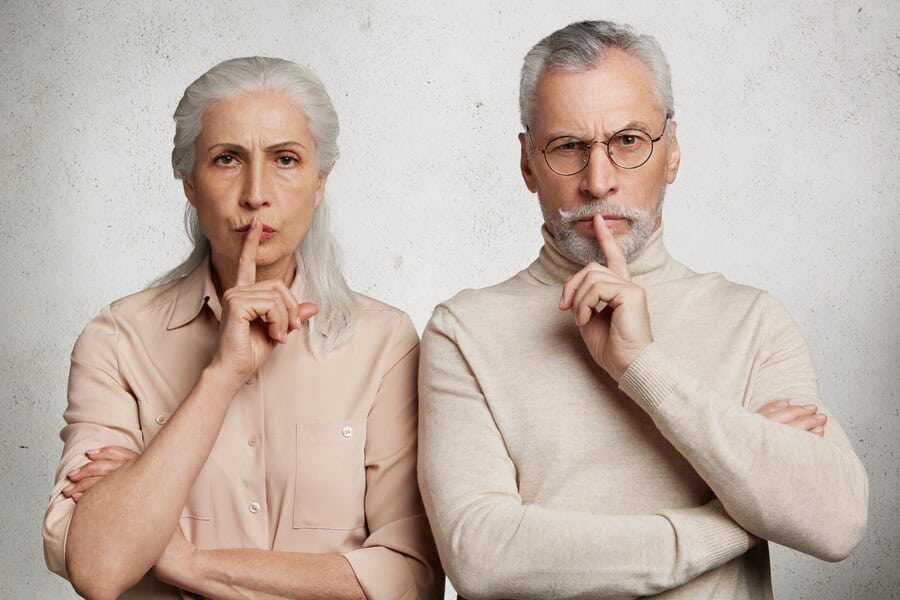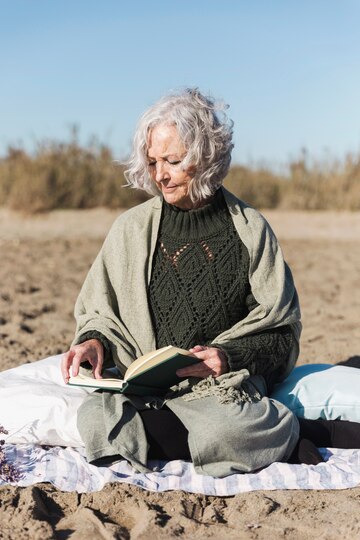
Challenging Aging Stereotypes in Society
Welcome to our insightful exploration of the battle against aging stereotypes and the importance of challenging ageism in today’s society.
Age discrimination and biases based on age can limit opportunities, perpetuate negative perceptions, and hinder the well-being of older individuals.
However, there is a growing activism focused on breaking down these stereotypes and promoting positive aging.
Debunking age-related biases is crucial to creating a more inclusive and accepting society for all ages.
By challenging the misconceptions and preconceived notions associated with aging, we can foster a more accurate and respectful understanding of older adults’ capabilities and experiences.
Age should never be a barrier to personal growth, professional development, or meaningful contributions to society.
Throughout this article, we will delve into various aspects of challenging aging stereotypes and shedding light on the impact they have on individuals and communities.
We will also highlight the power of elderly empowerment movements in combating ageism and discuss the role of media and advertising in shaping these stereotypes.
Finally, we will conclude with key takeaways to guide our efforts in promoting a society that celebrates and embraces people of all ages.
🚀 Click HERE TOLEARN MORE AND START YOUR TRANSFORMATION NOW! 🚀
Key Takeaways:
- The battle against aging stereotypes is crucial for creating an inclusive society that values people of all ages.
- Challenging ageism involves debunking age-related biases and promoting positive aging.
- Elderly empowerment movements play a significant role in breaking down stereotypes and empowering older adults.
- The media and advertising industry have a responsibility to promote accurate and positive representations of aging.
- By challenging aging stereotypes, we can create an age-friendly environment that appreciates the unique contributions of older individuals.
Understanding the Impact of Aging Stereotypes
Aging stereotypes play a significant role in our society, shaping our perceptions and attitudes towards older adults.
These stereotypes can be both negative and positive, influencing how we think about aging and its implications.
In this section, we will explore the different types of aging stereotypes, their impact on concerns about dementia, and their portrayal in the media.
By understanding the influence of aging stereotypes, we can strive towards challenging and dismantling them to foster a more accurate and inclusive view of aging.
Negative Aging Stereotypes
Negative aging stereotypes perpetuate the belief that older adults are frail, forgetful, and unable to contribute meaningfully to society.
These stereotypes can have detrimental effects on older individuals, leading to reduced self-esteem, isolation, and limited opportunities for employment and social engagement.
The fear of dementia is one specific concern exacerbated by negative aging stereotypes.
When individuals internalize the belief that cognitive decline is an inevitable part of aging, they may experience heightened anxiety and worry about their own cognitive abilities.
“Old age is not a disease – it is strength and survivorship, defeat over triumph, the fullness of the days. You are not old until regrets take the place of dreams.”
– Betty Friedan
Positive Aging Stereotypes
Positive aging stereotypes, on the other hand, depict older adults as wise, experienced, and active contributors to society.
These stereotypes promote the notion that aging can bring newfound freedom, fulfillment, and personal growth.
Embracing positive aging stereotypes can benefit older individuals by enhancing their self-esteem, motivation, and overall well-being.
By challenging negative stereotypes and embracing the positive aspects of aging, we can foster a society that values and supports the contributions of older adults.
Examples of Aging Stereotypes in the Media
The media has a powerful influence on shaping public perceptions and perpetuating aging stereotypes.
Older adults are often portrayed in limited, narrow roles that reinforce age-related biases.
They may be portrayed as helpless, technologically inept, or burdensome.
These narrow narratives fail to capture the diversity and complexity of older adults’ lives, reinforcing ageism and limiting opportunities for older individuals to participate fully in society.
To illustrate, here are a few examples of aging stereotypes commonly seen in the media:
| Examples of Aging Stereotypes in the Media | Description |
|---|---|
| The forgetful older adult | Depicting older individuals as forgetful or senile, reinforcing the belief that cognitive decline is a natural part of aging. |
| The burden on society | Portraying older adults as dependent on society and a financial burden, ignoring their valuable contributions and experiences. |
| The technologically challenged senior | Depicting older adults as struggling to adapt to technology, dismissing their ability to learn and benefit from modern advancements. |
It is essential to recognize and challenge these stereotypes, promoting a more realistic and diverse representation of aging in the media.
By portraying older adults in a positive and multifaceted light, we can create a society that values and respects individuals of all ages.
Continue reading the next section to explore the power of elderly empowerment movements in challenging aging stereotypes and promoting a more inclusive society.
The Power of Elderly Empowerment Movements
In the battle against aging stereotypes, elderly empowerment movements have emerged as powerful agents of change.
These movements aim to challenge and break down the stereotypes associated with aging, promoting a more positive and inclusive view of older adults.
By empowering the elderly, these initiatives not only counter age-related biases but also inspire individuals to age gracefully and redefine the narrative surrounding aging.
One notable example of such a movement is the aging gracefully campaign, which encourages older adults to embrace their age and live fulfilling lives.
This campaign emphasizes the importance of self-care, physical activity, and mental well-being in aging gracefully.
Through a series of workshops, seminars, and community events, the campaign provides resources and support for older adults to maintain their physical and emotional health.
🚀 Click HERE TOLEARN MORE AND START YOUR TRANSFORMATION NOW! 🚀
A powerful advocate for challenging aging stereotypes is the silverfox squad.
Comprising older adults from diverse backgrounds, this group defies societal expectations and stereotypes associated with aging.
Through their vibrant presence, the silverfox squad aims to inspire others to break free from ageed-based limitations and embrace their full potential.
The silverfox squad’s mission is simple: to demonstrate that age is just a number. We want to inspire others to challenge the stereotypes and limitations imposed on older adults and live life to the fullest.
Age-based stereotype threat is a reality that many older individuals face.
This refers to the fear of confirming negative stereotypes about aging, which can have detrimental effects on their self-esteem and well-being.
However, elderly empowerment movements play a crucial role in addressing age-based stereotype threat by fostering a sense of pride and confidence among older individuals.
By embracing positive aging and breaking down stereotypes associated with aging, elderly empowerment movements contribute to the creation of a more inclusive and age-friendly society.
These movements encourage society to value the wisdom, experiences, and contributions of older adults, challenging age-related biases, and helping to redefine what it means to age gracefully.
The Role of Media and Advertising in Shaping Aging Stereotypes
Media and advertising play a significant role in shaping perceptions and attitudes towards aging.
The portrayal of age stereotypes in these influential mediums can perpetuate existing biases and reinforce cultural stereotypes about aging.
It is crucial to understand the impact of media and advertising in order to promote more accurate and positive representations of aging in society.
Age stereotypes in advertising are particularly influential, as they can shape our beliefs and expectations about the aging population.
Advertisements often rely on clichéd images and narratives that reinforce age-related biases, such as portraying older adults as frail, helpless, or technologically inept.
These stereotypes not only undermine the diverse experiences and capabilities of older individuals but also contribute to age discrimination and reinforce societal ageist attitudes.
“The portrayal of age stereotypes in advertisements can perpetuate negative perceptions of aging and influence how society views and treats older adults.”
Similarly, the media plays a significant role in perpetuating age stereotypes.
Whether it’s in news coverage, TV shows, or movies, older adults are often portrayed in limited and stereotypical roles, such as being forgetful or being burdened by health issues.
These depictions fail to capture the complexity and diversity of the aging population and reinforce cultural stereotypes about aging.
Specific cultural contexts also contribute to the perpetuation of age stereotypes.
In Singapore, for example, there are cultural stereotypes about the elderly, such as the belief that they are a burden on society or that they lack technological proficiency.
These stereotypes can be reinforced through media and advertising, further marginalizing older individuals and hindering their social inclusion.
It is essential to challenge and counteract these age stereotypes in media and advertising.
By promoting more accurate and positive representations of aging, we can combat ageism, foster empathy, and cultivate a more inclusive society that respects and values individuals of all ages.
Conclusion
In conclusion, challenging aging stereotypes is crucial for creating a society that values and respects people of all ages.
By debunking negative stereotypes and promoting positive aging, we can break down age-related biases and create a more inclusive and age-friendly environment.
It is important to recognize and appreciate the unique contributions older individuals bring to the workforce and society as a whole.
Instead of perpetuating stereotypes, we should embrace the positive stereotypes of aging that highlight wisdom, experience, and resilience.
By empowering the elderly and providing opportunities for their continued participation, we can tap into a valuable pool of knowledge and expertise.
Age stereotypes older workers should be replaced with recognition of their skills and the positive impact they can have on workplace productivity.
Together, let us continue the battle against elderly population stereotypes and work towards a society that celebrates and embraces people of all ages.
By fostering understanding, respect, and inclusivity, we can create a future where age no longer limits opportunities but instead becomes a source of strength and inspiration.
🚀 Click HERE TOLEARN MORE AND START YOUR TRANSFORMATION NOW! 🚀
FAQ
What is the importance of challenging aging stereotypes in society?
Challenging aging stereotypes is crucial for creating a more inclusive and accepting society for people of all ages. Breaking down these stereotypes promotes positive aging and debunking age-related biases.
What are some examples of aging stereotypes?
Aging stereotypes can include beliefs that older individuals are frail, forgetful, or technologically inept. These stereotypes can be perpetuated in various forms of media and advertising.
How do aging stereotypes impact concerns about dementia?
Negative aging stereotypes can contribute to increased worry about dementia. The fear of memory decline and cognitive impairment can be influenced by societal beliefs about aging.
How do media and advertising shape aging stereotypes?
Media and advertising play a significant role in shaping aging stereotypes. They often perpetuate stereotypes of the elderly, reinforcing cultural beliefs and biases about aging.
What is age-based stereotype threat?
Age-based stereotype threat refers to the negative impact of internalizing and being aware of stereotypes associated with a particular age group. It can affect older individuals’ performance and well-being.
How can elderly empowerment movements challenge aging stereotypes?
Elderly empowerment movements, such as the aging gracefully campaign and the silverfox squad, aim to break down stereotypes associated with aging by promoting positive aging and empowering older individuals.
How can we promote more accurate and positive representations of aging?
Promoting more accurate and positive representations of aging involves challenging age-related biases in media and advertising, embracing the unique contributions of older individuals, and creating an age-friendly environment that values and respects people of all ages.
🚀 Click HERE TOLEARN MORE AND START YOUR TRANSFORMATION NOW! 🚀








